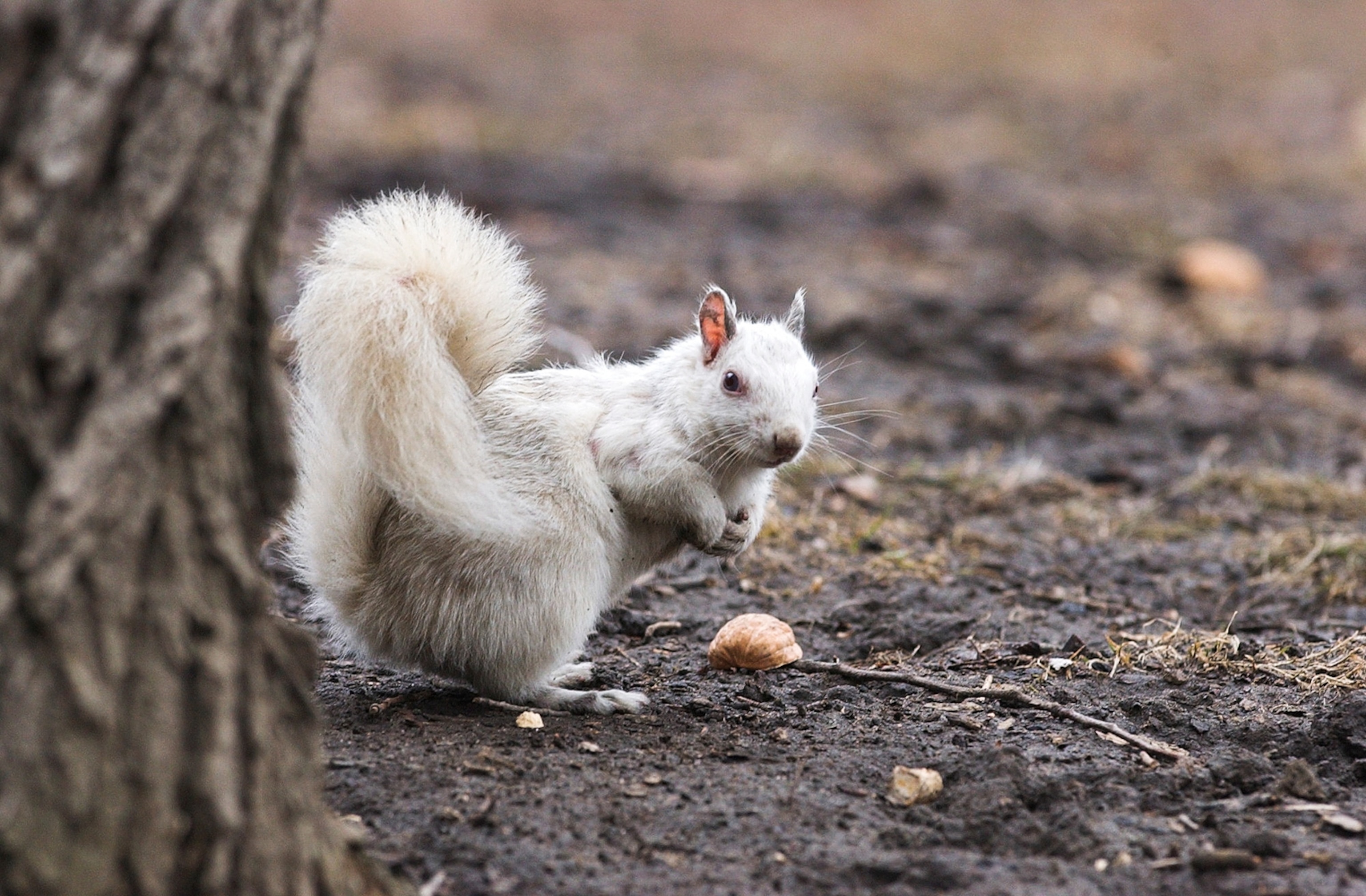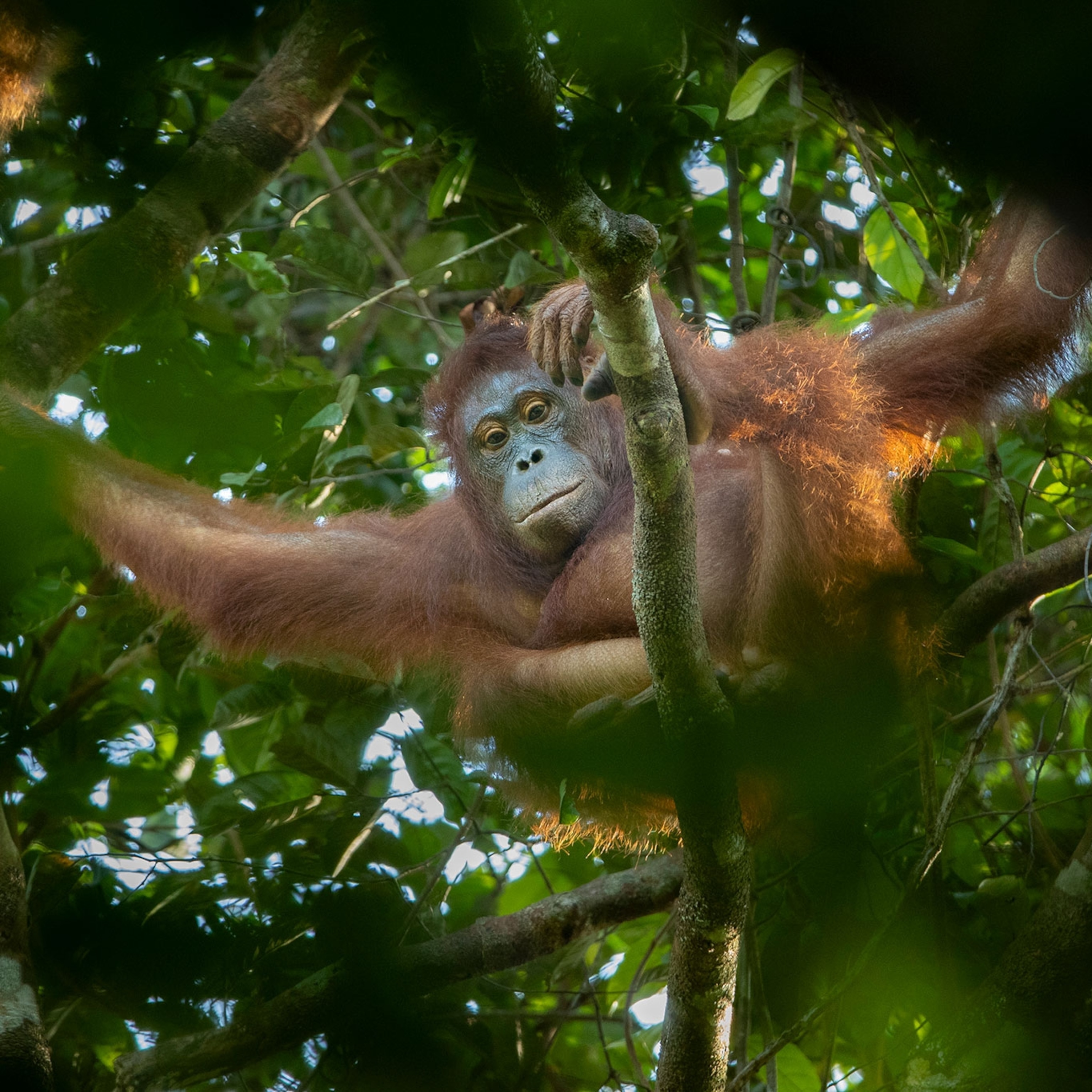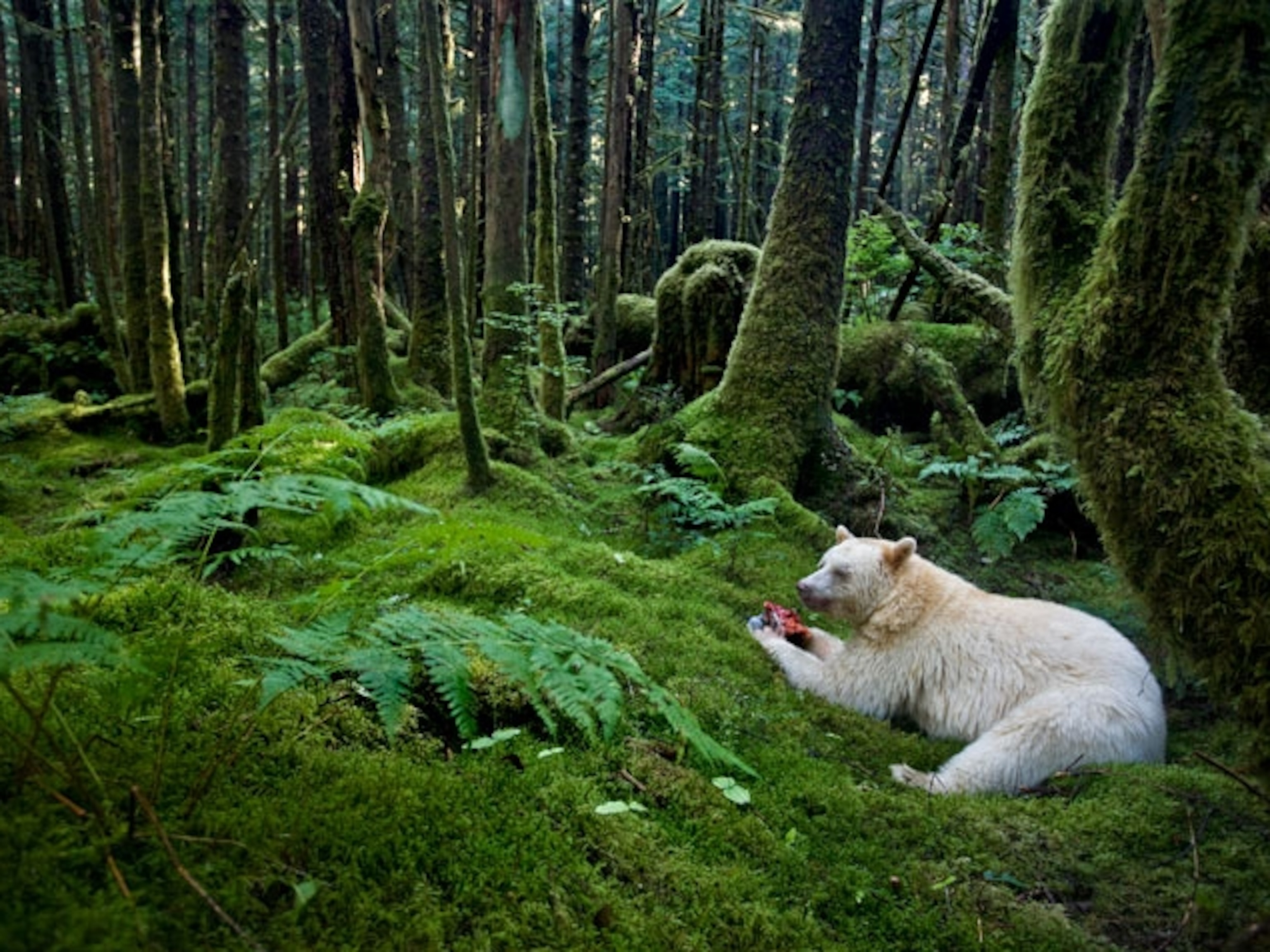Watch Incredibly Rare White Monkeys Ghost Through a Forest
In addition to these spider monkeys, the world of unusually white animals includes lions, bears and squirrels.
Spider monkeys, which swing through the tropical forest canopies of Central and South America, usually come in shades of brown, black, or grey. But on very rare occasions, a white spider monkey will ghost through the trees.
Two-and-a-half years ago, researchers in Colombia stumbled upon two white spider monkeys—male siblings. Andres Link, a primatologist at Universidad de Los Andes in Bogotá, Colombia, and colleagues have been monitoring them ever since, and have been able to videotape the primates as they lounge on branches.
The brothers are likely leucistic—possessing white- or light-colored fur, but with some color elsewhere—rather than albino, because they still have black eyes. Albino animals lack any pigment.
But their unusual color may be a sign of inbreeding in this isolated population, Link says. And that doesn't bode well for their future. Inbred populations tend to be more vulnerable to changes in habitat or climate than genetically diverse groups. Link and colleagues are waiting on tests to confirm their genetics. (Read about a white gorilla that was a result of inbreeding.)
The brothers seem to be able to lead regular lives, though. "We see no difference in their ability to survive or interact with other group members," Link says.
Being colorless isn't all bad. In fact, in some cultures around the world, white animals are an indication of luck or good fortune. Here are five examples of leucistic or albino animals and the mystique surrounding them.
Kermode "Spirit" Bear
The Kermode bear is a white black bear—a variant of the North American black bear—that lives in British Columbia’s Great Bear Rainforest.

According to National Geographic magazine, if two black bears that both carry a recessive gene for white fur mate, they may produce a white bear cub.
Hunting white bears has always been taboo for the First Nations people that share the bear’s land, and today the British Columbian government fines hunters $100,000 in Canadian dollars for shooting one of the bears. (See pictures of the Kermode bear.)
White fur occurs in one of every 40 to 100 black bears on British Columbia’s mainland coast, but the trait is more pronounced on some islands in the Great Bear Rainforest. Still, scientists estimate there are only 200 Kermode bears in the world.
White Lions
According to African folklore, white (or blonde) lions have occurred in the Timbavati region of South Africa for hundreds of years. The animals are leucistic, their color the result of a recessive gene.
In myths, white lions are children of the Sun God sent to Earth as divine gifts. Oral traditions recall the special birth of a white lion, heralded by a star that fell to Earth, during Queen Numbi’s reign over 400 years ago.
The first documented sighting of a white lion in Timbavati was in 1938. In 1975, two white lion cubs were taken from the wild to the National Zoo in Pretoria. The roughly 300 white lions in captivity today are selectively bred to be white and are descendants of those lions. (Watch video: “Lion Farming.”)
In 2003, the Global White Lion Protection Trust began reintroducing white lions to Timbavati, and today it is the home of several white lion prides.
However, white lions in captivity can be controversial, not only because the animals are inbred, but also because the zoo oddities serve no purpose other than entertainment, according to some groups.
"They might be 'cute,' but [white lions] contribute nothing to increasingly urgent conservation needs of their tawny relatives in the wild," Pieter Kat, a trustee at the lion-conservation group LionAid, said in a 2013 statement.
White Elephant
Elephants are considered special in Thailand, and white elephants in particular are regarded as sacred and lucky because they are associated with the birth of the Buddha—and because by law, all white elephants belong to the king, according to the Thai government.

Legend holds that the more white elephants found during a king’s reign, the more glorious and prosperous his reign will be. Today, they are commonly thought to bring good luck.
Most white elephants are not truly white or albino, but are paler in color than other elephants.
The expression "white elephant" means a valuable but burdensome possession, which the owner does not want but has difficulty getting rid of.
The saying is thought to have originated from the ancient Thai monarchy practice of giving elephants as gifts. If the king was happy with a subject, he would give him an elephant and some land. But if he was dissatisfied with a subordinate, he would give him only a white elephant. As it was illegal for a royal elephant to work or be sold, this gift would often financially ruin the recipient.
White Buffalo
White buffalo are not only rare (just one of every ten million buffalo are born white), they are considered sacred by many Native Americans. They may be albino or leucistic.
According to legend, at a time when the Lakota Sioux were starving due to lack of game, a beautiful woman dressed in white appeared to them. She gave the people a sacred pipe and taught them how to pray and follow the proper path while on Earth. Before leaving, she rolled on the ground four times, changing color each time, until she turned into a white buffalo calf. As she left, great herds of buffalo descended on the plains.
The Native American Times reports that the earliest recorded sighting of a white buffalo calf was in 1833. Over the past few decades, they have become more common, with about 20 documented white buffalo calves born since the 1990s.
For many Native Americans, the birth of a sacred white buffalo calf is a sign of hope and an indication of good and prosperous times ahead.
Albino Squirrels
The small town of Olney, Illinois, is famous for its albino squirrels. No one is quite sure how it started, but by 1943, the population had reached its peak of about a thousand of the pale squirrels. Today the population holds steady at around 200 animals.

The town holds a squirrel count each fall to make certain that the population is healthy. Albino squirrels have the right of way on all public streets, sidewalks, and thoroughfares in Olney, and there is a $750 fine for running one over with a car. In 1997, the City Council amended its ordinance that prohibited dogs from running free to include cats, as well.
The albino squirrel has been embraced by Olney’s citizens as their town’s symbol: The police department’s badge even has a white squirrel on it.







